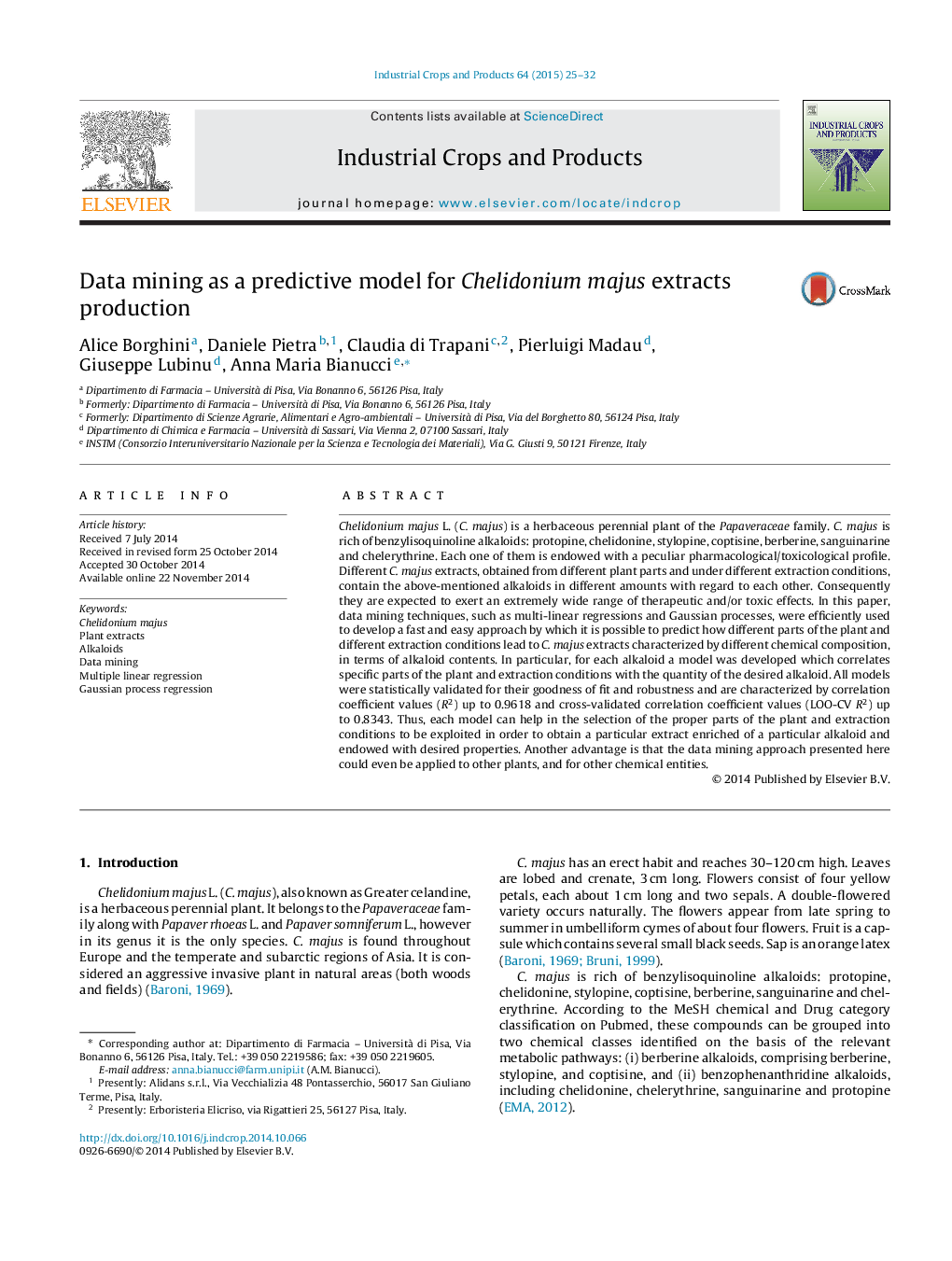| کد مقاله | کد نشریه | سال انتشار | مقاله انگلیسی | نسخه تمام متن |
|---|---|---|---|---|
| 4513008 | 1624845 | 2015 | 8 صفحه PDF | دانلود رایگان |

• Different parts from C. majus lead to extracts with different alkaloid contents.
• Data mining models were built to predict alkaloid contents in C. majus extracts.
• Dataset: the alkaloid contents of C. majus extracts from different plant parts.
• Data mining can help to obtain a plant extract endowed with desired properties.
• Data mining approaches could be applied to other plants and chemical entities.
Chelidonium majus L. (C. majus) is a herbaceous perennial plant of the Papaveraceae family. C. majus is rich of benzylisoquinoline alkaloids: protopine, chelidonine, stylopine, coptisine, berberine, sanguinarine and chelerythrine. Each one of them is endowed with a peculiar pharmacological/toxicological profile. Different C. majus extracts, obtained from different plant parts and under different extraction conditions, contain the above-mentioned alkaloids in different amounts with regard to each other. Consequently they are expected to exert an extremely wide range of therapeutic and/or toxic effects. In this paper, data mining techniques, such as multi-linear regressions and Gaussian processes, were efficiently used to develop a fast and easy approach by which it is possible to predict how different parts of the plant and different extraction conditions lead to C. majus extracts characterized by different chemical composition, in terms of alkaloid contents. In particular, for each alkaloid a model was developed which correlates specific parts of the plant and extraction conditions with the quantity of the desired alkaloid. All models were statistically validated for their goodness of fit and robustness and are characterized by correlation coefficient values (R2) up to 0.9618 and cross-validated correlation coefficient values (LOO-CV R2) up to 0.8343. Thus, each model can help in the selection of the proper parts of the plant and extraction conditions to be exploited in order to obtain a particular extract enriched of a particular alkaloid and endowed with desired properties. Another advantage is that the data mining approach presented here could even be applied to other plants, and for other chemical entities.
Journal: Industrial Crops and Products - Volume 64, February 2015, Pages 25–32